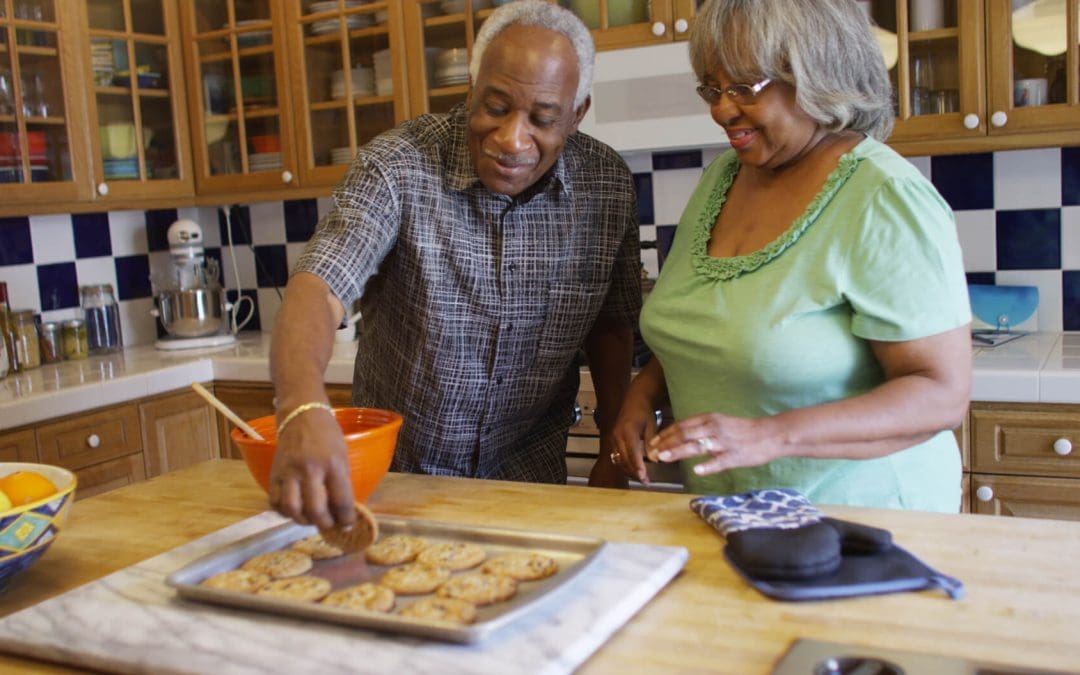As our loved ones age, ensuring their safety at home becomes a top priority. Many seniors prefer to age in place, and while this provides comfort and familiarity, homes often need modifications to accommodate the changing physical needs that come with aging. From mobility concerns to potential hazards, creating a safe environment for seniors involves proactive planning and thoughtful adjustments. In this guide, we’ll explore essential changes that can make a home safe for seniors, addressing various rooms and potential challenges.
Assess the Home for Hazards to Make Your Home Safe for Seniors
Before making changes, conduct a thorough assessment of the home to identify potential hazards. Look for anything that could cause slips, trips, or falls, as these are the most common risks for seniors. Some key areas to examine include:
- Floors: Are there loose rugs or uneven surfaces?
- Lighting: Is the lighting adequate, especially in hallways and staircases?
- Bathrooms: Are there grab bars or other safety features installed?
Once you’ve identified problem areas, prioritize the modifications that will have the most impact.
Improve Lighting Throughout the Home
One of the simplest and most effective ways to make a home safer for seniors is by improving lighting. Poor lighting can make it difficult to see obstacles or uneven surfaces, leading to falls. Install brighter bulbs in frequently used areas, including hallways, staircases, and bathrooms. Motion sensor lighting is a great option for seniors, as it automatically illuminates the space without the need to fumble for light switches.
Consider adding nightlights in bedrooms, hallways, and bathrooms to ensure seniors can navigate the home safely at night.
Eliminate Tripping Hazards to Make Your Home Safe for Seniors
Falls are one of the leading causes of injury for seniors, and many falls occur due to tripping over loose items. To reduce the risk, remove or secure loose rugs, cords, and clutter. Rugs should have non-slip backing, and any exposed cords should be safely tucked away or secured to the walls. Additionally, ensure that walkways and doorways are clear of furniture or other obstacles that could impede movement.
If the home has stairs, installing handrails on both sides can provide added stability. For homes with multiple levels, consider installing stairlifts to make it easier for seniors to move between floors.
Modify Bathrooms for Accessibility
The bathroom can be one of the most dangerous areas in the home for seniors due to slippery surfaces and limited mobility. To make the bathroom safer, install grab bars near the toilet, in the shower, and near the bathtub. These provide support for balance and prevent falls.
A walk-in shower or bathtub with a low threshold can also reduce the risk of slipping. Non-slip mats or textured flooring in the shower area provide additional traction. For seniors who have difficulty standing, a shower chair or bench can offer a safer and more comfortable bathing experience. Installing a handheld showerhead makes bathing easier while seated.
Consider raising the height of the toilet or installing a toilet seat riser, which can make it easier for seniors to sit down and stand up.
Ensure Kitchen Safety
The kitchen is another area that may require modifications to ensure safety for seniors. Store frequently used items within easy reach to minimize the need for climbing or bending, which can cause strain or imbalance. Consider installing pull-out shelves in cabinets, making it easier to access items without overreaching.
Ensure that all appliances are in good working order and easy to use. Electric stovetops are generally safer than gas, as they eliminate the risk of gas leaks. If the senior has memory challenges, stove alarms or automatic shut-off features can help prevent accidental fires.
Increase Accessibility to Make Your Home Safe for Seniors
As mobility becomes more limited with age, making living spaces easier to navigate is essential. Widen doorways to accommodate walkers or wheelchairs, if necessary. Lever-style door handles are easier to operate than traditional knobs, especially for seniors with arthritis or limited hand strength.
If possible, create a single-level living space to eliminate the need for seniors to navigate stairs. Placing commonly used items like the phone, remote controls, and medications within easy reach helps reduce unnecessary movement.
Consider Mobility Aids and Assistance
For seniors with limited mobility, installing assistive devices can make a significant difference in their ability to navigate the home safely. Stairlifts, ramps for outdoor steps, and grab bars near doorways or high-traffic areas can provide extra support.
If the senior uses a wheelchair or walker, make sure doorways and hallways are wide enough for easy movement. For those who have difficulty standing for long periods, adding a comfortable chair in frequently used areas, like the kitchen or bathroom, can provide a place to rest.
Install a Medical Alert System
For seniors living alone, a medical alert system can provide peace of mind for both them and their families. These systems allow seniors to call for help in an emergency, even if they are unable to reach a phone. Some systems come with fall detection, automatically alerting caregivers or emergency services if they fall.
This is especially important for seniors with health conditions that put them at greater risk of falls or sudden medical emergencies.
Improve Fire and Carbon Monoxide Safety
Ensuring that smoke and carbon monoxide detectors are installed and working correctly is crucial in any home, especially for seniors. Check that alarms are placed in key areas like the kitchen, bedrooms, and hallways. Make sure seniors can hear the alarms from any room in the house or consider installing models with flashing lights for those with hearing impairments.
Keep fire extinguishers in accessible locations and make sure the senior knows how to use them. In the event of an emergency, having clear escape routes is essential, so take the time to review an emergency plan with them.
Encourage Regular Home Maintenance
Regular maintenance is key to preventing hazards. Ensure that any repairs, such as fixing loose floorboards, leaky faucets, or malfunctioning appliances, are addressed promptly. Small issues can quickly turn into major risks for seniors if left unchecked.
Periodic checks on the home’s infrastructure, such as handrails, stair lifts, and ramps, will ensure that these safety features remain reliable over time.
Creating a safe home environment for seniors involves addressing potential hazards, enhancing accessibility, and making thoughtful modifications. By improving lighting, eliminating tripping hazards, and making essential changes in the bathroom, kitchen, and living areas, you can significantly reduce the risk of accidents and improve the quality of life for your elderly loved ones.
Taking the time to assess the home and make these adjustments now will allow seniors to age in place safely and comfortably, providing peace of mind for both them and their families.
Appalachian Inspection Services offers inspections to homebuyers and sellers in Asheville, NC, and the surrounding areas. Contact us to request an appointment for our services.

